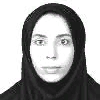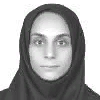International Journal of Image, Graphics and Signal Processing (IJIGSP)
IJIGSP Vol. 4, No. 2, 8 Mar. 2012
Cover page and Table of Contents: PDF (size: 365KB)
Recurrence Plots of Heart Rate Signals during Meditation
Full Text (PDF, 365KB), PP.44-50
Views: 0 Downloads: 0
Author(s)
Index Terms
Chaotic behavior, Heart rate, Meditation, Phase space, Recurrence quantification analysis
Abstract
The current study analyses the dynamics of the heart rate signals during specific psychological states in order to obtain a detailed understanding of the heart rate patterns during meditation. In the proposed approach, heart rate time series available in Physionet database are used. The dynamics of the signals are then analyzed before and during meditation by examining the attractors in the phase space and recurrence quantification analysis. In general, the results reveal that the heart rate signals transit from a chaotic, highly-complex behavior before meditation to a low dimensional chaotic (and quasi-periodic) motion during meditation. This can be due to decreased nonlinear interaction of variables in meditation states and may be related to increased parasympathetic activity and increase of relaxation state. The results suggest that nonlinear chaotic indices may serve as a quantitative measure for psychophysiological states.
Cite This Paper
Ateke Goshvarpour,Atefeh Goshvarpour,"Recurrence Plots of Heart Rate Signals during Meditation", IJIGSP, vol.4, no.2, pp.44-50, 2012. DOI: 10.5815/ijigsp.2012.02.07
Reference
[1]Rubia K. (2009). The neurobiology of meditation and its clinical effectiveness in psychiatric disorders. Biological Psychology, 82, 1-11.
[2]Henry A., Lovell N. (1999). Nonlinear dynamics time series analysis, in: M. Akay (Eds.), Nonlinear biomedical signal processing - dynamic analysis and modeling. John Wiley & Sons-IEEE Press. Hanover, New Hampshire, 1-39.
[3]Goshvarpour A., Goshvarpour A., Rahati S. (2011). Analysis of lagged Poincare plots in heart rate signals during meditation. Digital Signal Processing, 21, 208-214.
[4]Poincaré H. (1890). Sur la probleme des trois corps et les équations de la dynamique. Acta Mathematica, 13, 1–271.
[5]Eckmann J.-P., Kamphorst S.O., Ruelle D. (1987). Recurrence plots of dynamical systems. Europhys. Lett, 5, 973–977.
[6]Kaluzny P., Tarnecki R. (1993). Recurrence plots of neuronal spike trains. Biol. Cybernet, 68, 527-534.
[7]Del Santo F., Gelli F., Schmied A., Vedel J.-P., Rossi A., Mazzocchio R. (2006). Motor unit synchronous firing as revealed by determinism of surface myoelectric signal. J. Neurosci. Methods, 155, 116-121.
[8]Webber Jr. C.L., Schmidt M.A., Walsh J.M. (1995). Influence of isometric loading on biceps EMG dynamics as assessed by linear and nonlinear tools. J. Appl. Physiol, 78, 814–822.
[9]Acharya U.R., Faustand O., Kannathal N., Chua T.L., Laxminarayan S. (2005). Nonlinear analysis of EEG signals at various sleep stages. Comput. Meth. Programs Biomed, 80, 37–45.
[10]Babloyantz A. (1991). Evidence for slow brain waves: a dynamical approach. Electroencephalogr. Clin. Neurophysiol, 78, 402–405.
[11]Groth A. (2005). Visualization of coupling in time series by order recurrence plots. Phys. Rev. E, 72, 046220.
[12]Marwan N., Meinke A. (2004). Extended recurrence plot analysis and its application to ERP data, Int. J. Bifur. Chaos Cogn. Complex Brain Dynam, 14, 761–771.
[13]Thomasson N., Hoeppner T.J., Webber Jr. C.L., Zbilut J.P. (2001). Recurrence quantification in epileptic EEGs. Phys. Lett. A, 279, 94-101.
[14]Faure P., Korn H. (2001). Is there chaos in the brain? I. Concepts of nonlinear dynamics and methods of investigation. C.R. Acad. Sci. III—Sci. de la Vie, 324, 773–793.
[15]Marwan N., Wessel N., Meyerfeldt U., Schirdewan A., Kurths J. (2002a). Recurrence plot based measures of complexity and its application to heart rate variability data. Phys. Rev. E, 66, 026702.
[16]Zbilut J.P., Mitchell J.C., Giuliani A., Colosimo A., Marwan N., Webber C.L. (2004). Singular hydrophobicity patterns and net charge: A mesoscopic principle for protein aggregation/folding. Physica A, 343, 348-358.
[17]Wu Z-B. (2004). Recurrence plot analysis of DNA sequences. Phys. Lett. A, 332, 250-255.
[18]Facchini A., Kantz H., Tiezzi E. (2005). Recurrence plot analysis of nonstationary data: the understanding of curved patterns. Phys. Rev. E, 72, 021915.
[19]Matassini L., Kantz H., Hoyst J., Hegger R. (2002). Optimizing of recurrence plots for noise reduction. Phys. Rev. E, 65, 021102.
[20]Shelhamer M. (1997). On the correlation dimension of optokinetic nystagmus eye movements: computational parameters, filtering, nonstationarity, and surrogate data. Biol. Cybern, 76, 237–250.
[21]Riley M.A., Balasubramaniam R., Turvey M.T. (1999). Recurrence quantification analysis of postural fluctuations. Gait Post, 9, 65–78.
[22]Naschitz J.E., Rosner I., Rozenbaum M., Fields M., Isseroff H., Babich J.P., Zuckerman E., Elias N., Yeshurun D., Naschitz S., Sabo E. (2004). Patterns of cardiovascular reactivity in disease diagnosis. QJM: Int. J. Med, 97, 141–151.
[23]Peng K., Liu Y., Khalsa G., Douglas P.S., Benson C.H., Goldberger A.L. (1999). Exaggerated heart rate oscillations during two meditation techniques. Int. J. Cardiol, 70, 101–107.
[24]Takens F. (1981). Detecting Strange Attractors in Turbulence, volume 898 of Lecture Notes in Mathematics. Springer, Berlin, 366-381.
[25]Kantz H., Schreiber T. (1997). Nonlinear Time Series Analysis. University Press, Cambridge.
[26]Marwan N., Romano M.C., Tiel M., Kurths J. (2007). Recurrence plots for the analysis of complex systems. Physics Reports, 438, 237-329.
[27]Mindlin G.M., Gilmore R. (1992). Topological analysis and synthesis of chaotic time series. Physica D, 58, 229–242.
[28]Koebbe M., Mayer-Kress G. (1992). Use of recurrence plots in the analysis of time-series data, in: M. Casdagli, S. Eubank (Eds.). Proceedings of SFI Studies in the Science of Complexity, vol. XXI, Redwood City, Addison-Wesley, Reading, MA, 361–378.
[29]Zbilut J.P., Webber Jr. C.L. (1992). Embeddings and delays as derived from quantification of recurrence plots. Phys. Lett. A, 171, 199–203.
[30]Webber Jr. C.L., Zbilut J.P. (1994). Dynamical assessment of physiological systems and states using recurrence plot strategies. J. Appl. Phys, 76, 965-973.
[31]Marwan N., Kurths J. (2002). Nonlinear analysis of bivariate data with cross recurrence plots. Phys. Lett. A, 302, 299-307.
[32]Marwan N., Thiel M., Nowaczyk N.R. (2002b). Cross Recurrence Plot Based Synchronization of Time Series. Nonl. Proc. Geophys, 9, 325-331.
[33]Thiel M., Romano M.C., Kurths J., Meucci R., Allaria E., Arecchi F.T. (2002). Influence of observational noise on the recurrence quantification analysis. Physica D, 171, 138-152.
[34]Trulla L.L., Giuliani A., Zbilut J.P., Webber Jr. C.L. (1996). Recurrence quantification analysis of the logistic equation with transients. Phys. Lett. A, 223, 255-260.
[35]Marwan N. (2009) Cross Recurrence Plot Toolbox for MATLAB. 5.15, Release 28, Nonlinear Dynamics Group, University of Potsdam.

